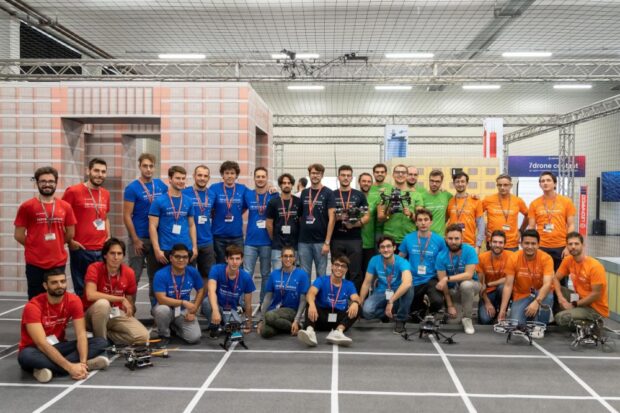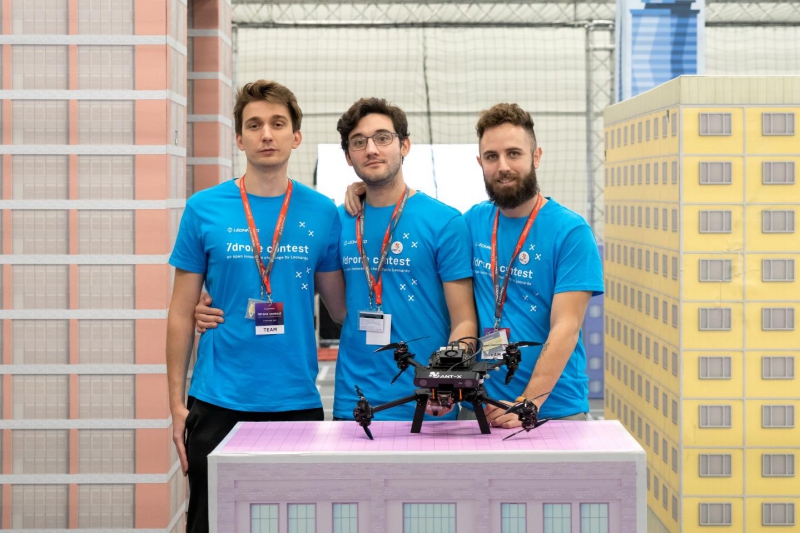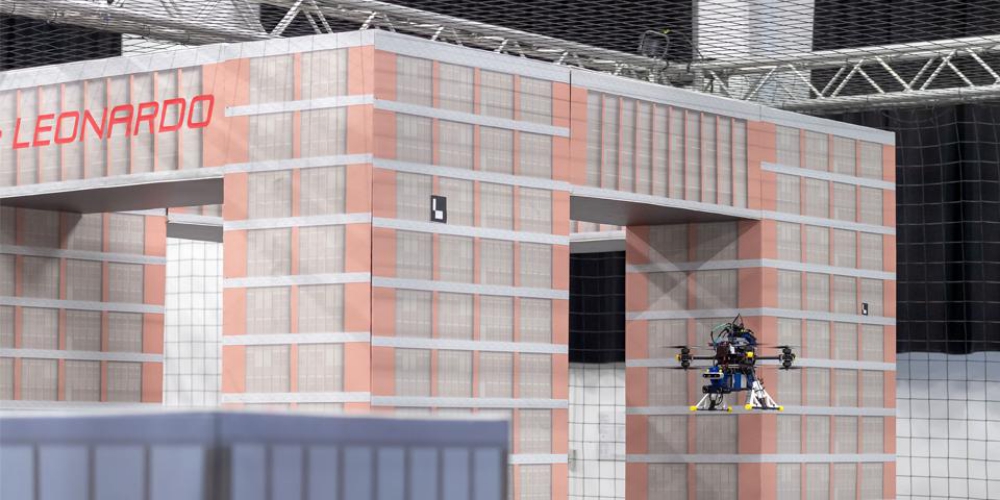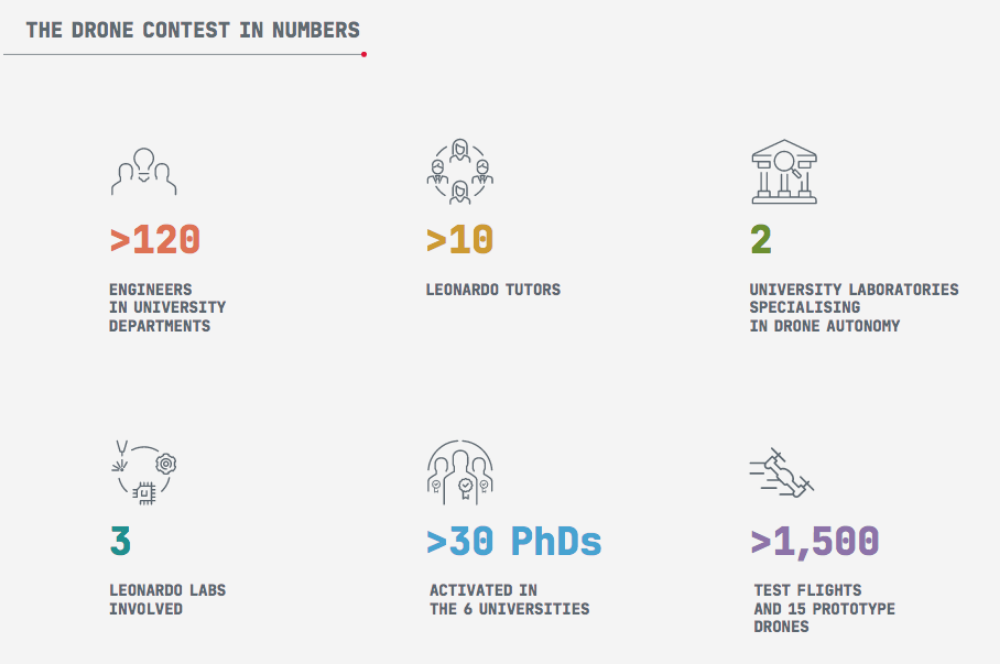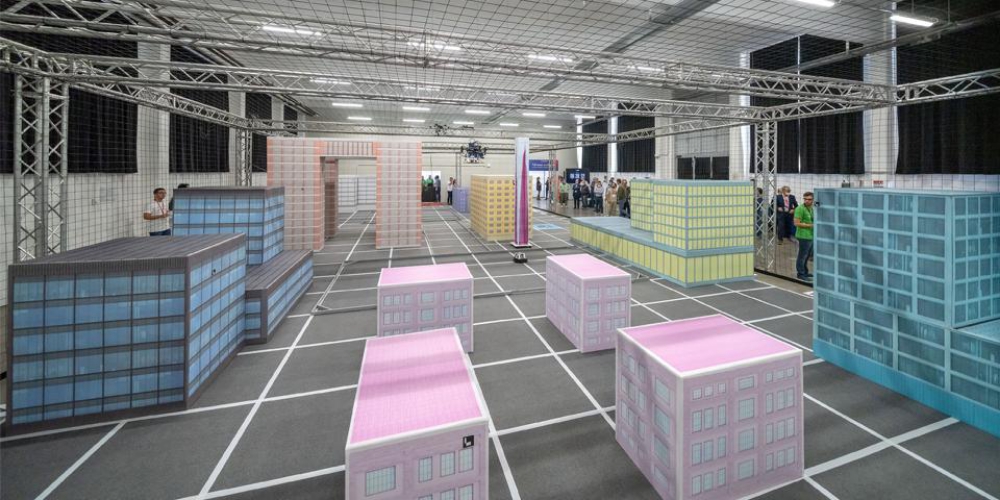Six teams from six universities comprising PhD students, researchers and undergraduates, supported by their professors and experts from Leonardo and the Leonardo Labs, six drones flying in total autonomy, three heats of increasing complexity on a competition field equipped with buildings, landing and take-off pads, and the placing of known and unknown objects.
The winning team, for the third year running, was the Polytechnic University of Milan (Politecnico di Milano).
The competition, in its third and final edition in this series, took place over three heats on 6 and 7 October in the Leonardo ‘drone arena’ in Turin. The six universities – the University of Rome Tor Vergata, the Polytechnic University of Turin, the Polytechnic University of Milan, the University of Bologna, the Sant’Anna School of Advanced Studies of Pisa, and the University of Naples Federico II – demonstrated the increasingly advanced capabilities of their drones in locating and avoiding obstacles and in identifying and pursuing targets.
Victory went to the Polytechnic University of Milan team led by PhD student Gabriele Roggi, confirming its position as the strongest team for the third time. Second equal were the University of Rome Tor Vergata team, ‘captained’ by PhD student Francesco Conversi, and the Polytechnic University of Turin team with PhD student Simone Godio, who also won the ‘Special Jury Prize’ for his distinguished performance in map reconstruction. In addition to its accuracy in positioning obstacles, the Turin team distinguished itself for its ability to characterise and reconstruct information about its surroundings.
Let us now take a step back to tell you what these three years of experimentation have meant for the students, researchers and Leonardo technicians involved: not only have technologies been developed, but an ecosystem has been created that is able to link up large businesses, the research and education sector, SMEs and start-ups. It is a continuum that makes possible the sharing of new ideas, innovation projects and research programmes in the field of Artificial Intelligence as applied to drones: the future of mobility and autonomous transport.
In the first year the drones were expected to demonstrate the ability to navigate in an unknown environment and in the absence of a GNSS signal, simulating an urban setting. The aim of this first year was to learn how to navigate autonomously in unknown environments and to be able to identify possible targets within them.
With the aim of raising the bar, in the second edition moving ground-based robots were added within the area, as well as a camera at the edge of the competition field. Working effectively with the camera enabled the drones to piece together reality in the least possible time and to speed up the execution of their mission. It was an experiment that envisaged a scenario in which drones could support humans in carrying out surveillance operations.
The third edition saw the introduction of ‘skyscrapers’ into the competition field in positions that were unknown to the teams. The aim of this was to evaluate the drones’ Collision Detection and Avoidance capabilities, and they were also assigned the task of pursuing an intruder and inspecting the walls of the buildings. Continuing the experience of the second year, the drones could also make use of a camera installed at the edge of the competition field. Within the field there were also some unknown objects that the drones were required to avoid and to reconstruct on the map. After correctly pursuing the intruder and sending the information to the Ground Control Station (GCS), the drones were required to demonstrate their ability to perform tasks assigned by the GCS operator by inspecting buildings, sending photos of markers on the same buildings, and landing at certain coordinates specified by the Leonardo jury.
Also invited to take part in this latter competition were two start-ups that revolve around the Leonardo acceleration projects, the BIF (Business Innovation Factory) and Take Off, which in the meantime set up exchange networks with the six universities and the Leonardo Labs. In these three years, the reach of the Drone Contest has also extended to all high school students as well as the universities taking part. In 2021 the six PhDs launched, together with Treccani and in collaboration with the Leonardo CTIO and the Leonardo Foundation, a video lecture series entitled ‘Anatomia di un drone‘ (Anatomy of a drone) to sow the seeds of curiosity in this world also among the younger generation.
And so, the first series of the Leonardo Drone Contest comes to a conclusion: from next year a new three-year series will begin to which other universities will be added. This will adhere to the same formula, but the bar will be raised higher and the challenge will become more complex with an exponential interaction between flying drones and terrestrial robots.
Source: Press Release

